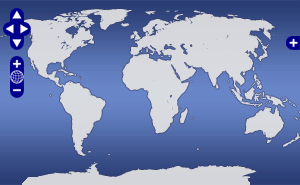Depth to top of subducting Juan de Fuca/Gorda/Explorer plate crust and plate boundary fault within the offshore Cascadia seismogenic zone, 42°N to 50°N
The two gridded surfaces in this data set correspond to depth in meters from the sea surface to Top of igneous Oceanic Crust (TOC) (file "Casie21-R2T-TOC_medflt-surface-mask.grd”) and to the interpreted plate boundary/megathrust fault (file "Casie21-R2T-PlateBdy_medflt-surface-mask.grd”) derived from CASIE21 and Juan de Fuca Ridge2Trench 2D long-offset multi-channel seismic (MCS) data. These MCS data were acquired using the R/V Marcus G. Langseth during two cruises: MGL2104 and MGL1211. The combined seismic coverage provides a quasi-regular grid of margin-perpendicular and margin-parallel seismic lines spaced ~50-75 km apart spanning the margin. All seismic sections are processed to Pre-Stack Depth Migration (PSDM) using the same processing scheme and parameters (see processing report and PSDM sections available at doi:10.26022/IEDA/331274 and doi:10.60521/331457). The TOC crust horizon is identified from PSDM sections based on reflection characteristics including amplitude, wavelength/frequency, and continuity. Moho reflections and other intra-crustal reflectivity are used to aid in TOC interpretations assuming a ~6 km thick oceanic crust. The plate boundary/megathrust fault is identified from the geometry and depth extent of thrust faults of the accretionary wedge as well as the geometry of deep sediment horizons and is well-constrained near the deformation front along all seismic lines crossing the margin. Observations of changes in TOC reflectivity beneath interpreted deeper sediment décollements further support interpretations. Estimated depth uncertainties for TOC and plate boundary fault picks from the seismic sections are +/- 100m on the incoming plate and are up to +/- 1km under the shelf. The TOC and plate boundary fault picks from all seismic lines are smoothed and gridded using the GMT algorithm “surface". Further descriptions of seismic data interpretation and gridding parameters used to derive the gridded surfaces are provided in Carbotte et al. Science Advances, 2024, at doi:10.1126/sciadv.adl3198; gridded TOC and plate boundary fault surfaces are visualized in Figs. 2A and 7A in that publication. The grids are in GMT-compatible netCDF format, with positive downwards.
Carbotte, Suzanne
Investigator
LDEO
Boston, Brian
Investigator
Auburn University
Han, Shuoshuo
Investigator
UTIG
Canales, JuanPablo
Investigator
WHOI
Shuck, Brandon
Investigator
LDEO
Tobin, Harold
Investigator
UW
Beeson, Jeffrey
Investigator
OSU
Nedimovic, Mladen
Investigator
Dalhousie
Device Info
Seismic:
Platform
Marcus G. Langseth (Array)
LDEO
Data DOI
Quality
2
The data have been processed/modified to a level beyond that of basic quality control (e.g. final processed sonar data, photo-mosaics).
License
Data Files
References
Data Citation Information
ISO/XML Metadata
Expand

 Map View
Map View

